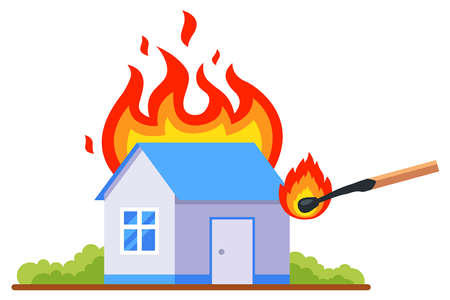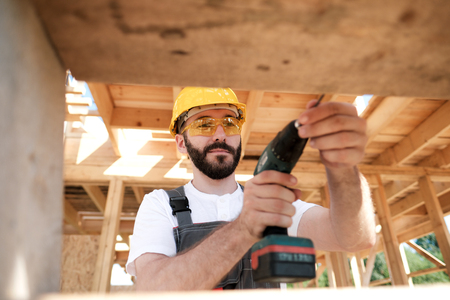1. Understanding What an Overloaded Circuit Is
In every home, electricity flows through a network of wires called circuits. These circuits are designed to carry a limited amount of electrical current, measured in amps. When you plug in too many devices or appliances on the same circuit and their combined demand exceeds what the wiring can handle, you end up with an overloaded circuit.
What Causes a Circuit to Become Overloaded?
The most common cause of an overloaded circuit is simply trying to use more electricity than the circuit is rated for. This usually happens when multiple high-wattage devices, like space heaters, hair dryers, or microwaves, are plugged into the same outlet or power strip. Every circuit has an amperage limit, and going over that limit can lead to overheating, tripped breakers, or even fire hazards.
Typical Household Circuit Capacities
Most homes in the U.S. have standard 15-amp or 20-amp circuits. Here’s a quick breakdown of what that means in terms of wattage:
| Circuit Type | Amperage | Voltage | Total Wattage Capacity |
|---|---|---|---|
| Standard Lighting/Outlet Circuit | 15 amps | 120 volts | 1,800 watts |
| Kitchen or Bathroom Circuit | 20 amps | 120 volts | 2,400 watts |
If the total wattage of everything plugged into one circuit goes beyond these limits, youre likely to experience problems. That’s why it’s important to be aware of what’s connected and how much power each device uses.
A Simple Example
If you have a 15-amp circuit (which can handle up to 1,800 watts), and you plug in a space heater (1,500 watts) along with a lamp (60 watts) and your phone charger (10 watts), youre already at 1,570 watts. Add anything else — like a vacuum cleaner — and you’ll probably trip the breaker.
This is just the beginning of understanding how overloaded circuits happen. In the next section, we’ll talk about warning signs to watch out for before things get dangerous.
2. Common Causes in American Homes
Overloaded circuits are a common electrical issue in many American households, especially as modern lifestyles rely heavily on electronics and appliances. Understanding what typically causes these overloads can help homeowners avoid potential hazards like tripped breakers, damaged outlets, or even electrical fires.
Everyday Scenarios That Lead to Overloads
Many people unknowingly push their home’s electrical systems beyond safe limits. Here are some everyday situations where overloaded circuits often occur:
| Scenario | Description |
|---|---|
| Too many devices plugged into one outlet | Using power strips or extension cords to plug multiple items into a single wall outlet—like chargers, lamps, and gaming consoles—can exceed the circuits capacity. |
| Simultaneous use of high-wattage appliances | Running appliances like microwaves, toasters, coffee makers, and air fryers at the same time on one kitchen circuit can quickly overload it. |
| Home office setups | A computer, printer, monitor, space heater, and other gear all plugged into one outlet or power strip can draw too much power. |
| Laundry room overloads | If your washer and dryer share a circuit with lighting or other outlets, running them together may cause an overload. |
| Holiday decorations | Stringing multiple lights and inflatable decorations from a single outdoor outlet is a frequent seasonal cause of circuit trips. |
The Role of Circuit Capacity
Circuits are designed to handle a certain amount of electrical load, usually measured in amps. For instance, a standard household circuit may support 15 or 20 amps. Plugging in devices that collectively require more than this will trip the breaker—or worse, overheat wiring behind your walls.
A Quick Look: Appliance Wattage Examples
| Appliance | Approximate Wattage |
|---|---|
| Coffee Maker | 800 – 1,500 watts |
| Microwave Oven | 900 – 1,200 watts |
| Hair Dryer | 1,200 – 1,875 watts |
| Space Heater | 750 – 1,500 watts |
| Laptop Charger | 50 – 100 watts |
If you’re using several of these high-wattage items on the same circuit at once, it’s easy to exceed the limit without realizing it. Being aware of these everyday patterns is the first step toward safer energy use at home.

3. Warning Signs of an Overloaded Circuit
Overloaded circuits are more common than most homeowners realize, and catching the warning signs early can prevent bigger problems down the line. When a circuit is carrying more electrical current than it was designed for, it can cause overheating, damage to appliances, or even start a fire. The good news is your home often gives you clues when somethings not right.
Common Symptoms of an Overloaded Circuit
Here are some telltale signs that may indicate your circuit is overloaded:
| Warning Sign | Description |
|---|---|
| Flickering or Dimming Lights | If lights dim or flicker when you turn on an appliance, its a sign the circuit is under stress. |
| Warm or Discolored Wall Plates | Wall plates that feel warm to the touch or have discoloration may indicate overheating from too much electrical load. |
| Frequent Tripped Circuit Breakers | If your breaker trips often, especially when using certain devices, the circuit may be overloaded. |
| Buzzing Sounds from Outlets or Breakers | A buzzing noise is never normal and could point to a serious wiring issue caused by overload. |
Stay Alert and Act Quickly
If you notice any of these symptoms, dont ignore them. Addressing an overloaded circuit early can help protect your home and family from potential hazards. Consider unplugging some devices or consulting a licensed electrician if problems persist.
4. Potential Risks and Hazards
Overloaded circuits might not seem like a big deal at first, but they can lead to some serious and even dangerous problems in your home. When too many devices or appliances draw power from the same circuit, it puts stress on your electrical system—and that’s when things can go wrong.
Electrical Fires
One of the most alarming risks of overloaded circuits is the potential for electrical fires. According to the U.S. Fire Administration (USFA), electrical malfunctions are responsible for an estimated 24,000 residential fires each year in the United States. Many of these are caused by overloaded outlets and extension cords. When wires overheat from carrying too much current, they can ignite nearby materials such as insulation or furniture.
Damaged Electronics and Appliances
Overloaded circuits dont just pose a fire risk—they can also damage your valuable electronics and appliances. Excessive voltage or heat can cause internal components to wear out faster, stop working properly, or fail completely. Imagine replacing your TV, computer, or refrigerator just because your wiring couldn’t handle the load!
Potential Injury or Shock
An overloaded circuit can also increase the chances of electric shock. If wires become exposed due to overheating or melting insulation, anyone who comes into contact with them—especially children or pets—could be at risk of injury.
Common Consequences of Overloaded Circuits
| Risk | Description | Potential Outcome |
|---|---|---|
| Electrical Fires | Overheated wires ignite flammable materials | Property damage, injuries, or fatalities |
| Damaged Electronics | Voltage fluctuations harm devices and appliances | Costly repairs or replacements |
| Electric Shock | Melted insulation exposes live wires | Bodily harm, especially to children and pets |
| Circuit Breaker Trips | Circuit becomes overwhelmed and shuts off power | Inconvenience and potential loss of unsaved work/data |
Stay Aware of Warning Signs
If you notice flickering lights, buzzing sounds from outlets, burning smells, or frequently tripped breakers, these are clear warning signs that your circuit may be overloaded. Don’t ignore them—these small signs can lead to major problems if left unchecked.
Being aware of these potential hazards is the first step toward keeping your home safe. In the next section, we’ll talk about practical ways to prevent overloaded circuits before they become a problem.
5. How to Prevent Electrical Overloads
Electrical overloads are one of the most common causes of home electrical fires. Fortunately, there are several simple steps homeowners can take to reduce the risk and keep their homes safe. Here are some practical tips to help you prevent overloaded circuits.
Use Outlets Properly
Overusing a single outlet or power strip is one of the fastest ways to overload a circuit. Make sure youre not plugging too many high-power devices into the same area. Spread out your appliances across multiple outlets and avoid daisy-chaining power strips together.
Tips for Safe Outlet Use:
| Do | Dont |
|---|---|
| Plug heavy appliances (like microwaves) directly into wall outlets | Use extension cords as permanent solutions |
| Unplug unused devices to free up space and reduce load | Overload a single outlet with multiple high-wattage items |
Upgrade Your Electrical Panel
If your home is older or you’ve added new appliances recently, your current electrical panel may not be able to handle the increased demand. Upgrading your panel will give you more capacity and help prevent overloads.
Signs You Might Need an Upgrade:
- Circuit breakers trip frequently
- You rely heavily on extension cords and power strips
- Your home still uses a fuse box instead of a breaker panel
- You’re planning a major renovation or adding new appliances
Use Surge Protectors Wisely
Surge protectors not only protect your electronics from voltage spikes but also help manage the amount of electricity flowing through your outlets. Be sure to choose quality surge protectors that meet UL safety standards.
What to Look for in a Surge Protector:
- UL-listed rating for safety assurance
- A joule rating that matches your needs (higher is better)
- An automatic shutoff feature when protection wears out
- Indicator lights showing protection status
Hire a Licensed Electrician for Regular Inspections
A licensed electrician can evaluate your home’s electrical system and identify potential problems before they become serious. Annual inspections are especially important in older homes or if you’ve recently bought a house.
Benefits of Professional Electrical Evaluations:
- Ensure circuits aren’t overloaded or improperly wired
- Detect outdated components that need replacing
- Receive expert advice on energy efficiency and safety upgrades
- Peace of mind knowing your system meets current code requirements
By following these tips and staying proactive about electrical safety, you can protect your home from the dangers of overloaded circuits and enjoy peace of mind all year round.
6. When to Call a Professional Electrician
While its great to understand the basics of electrical safety, some situations require the expertise of a licensed electrician. Knowing when to call in a professional can help prevent serious damage to your home and keep your family safe.
Signs You Shouldnt Ignore
If youre experiencing any of the following issues, its time to bring in an expert:
| Issue | Why It Matters |
|---|---|
| Frequent circuit breaker trips | This may indicate that your electrical system is overloaded or there’s a short circuit. |
| Flickering or dimming lights | Could be a sign of poor wiring or an overloaded circuit. |
| Burning smell from outlets or panel | This is a serious fire hazard and needs immediate attention. |
| Outlets that are warm or hot to the touch | This could signal loose wiring or overload, which can lead to fires. |
| Sparks when plugging in appliances | A sign of faulty wiring or overuse of circuits. |
Upgrading Your Electrical System
You should also consider hiring a licensed electrician for any project that increases your home’s electrical load. This includes:
- Installing new large appliances: Adding devices like electric dryers, ovens, or HVAC systems often requires additional circuits.
- Home remodeling: Renovations might need upgraded wiring, new outlets, or increased panel capacity.
- Adding outdoor lighting or hot tubs: These features require special wiring and protection from the elements.
- Replacing an old electrical panel: Older panels may not handle modern energy demands safely.
The Benefits of Hiring a Pro
A qualified electrician will ensure all work meets local building codes and safety standards. They can also spot hidden dangers and recommend upgrades that improve efficiency and safety. Its not just about fixing problems—its about preventing them before they happen.


